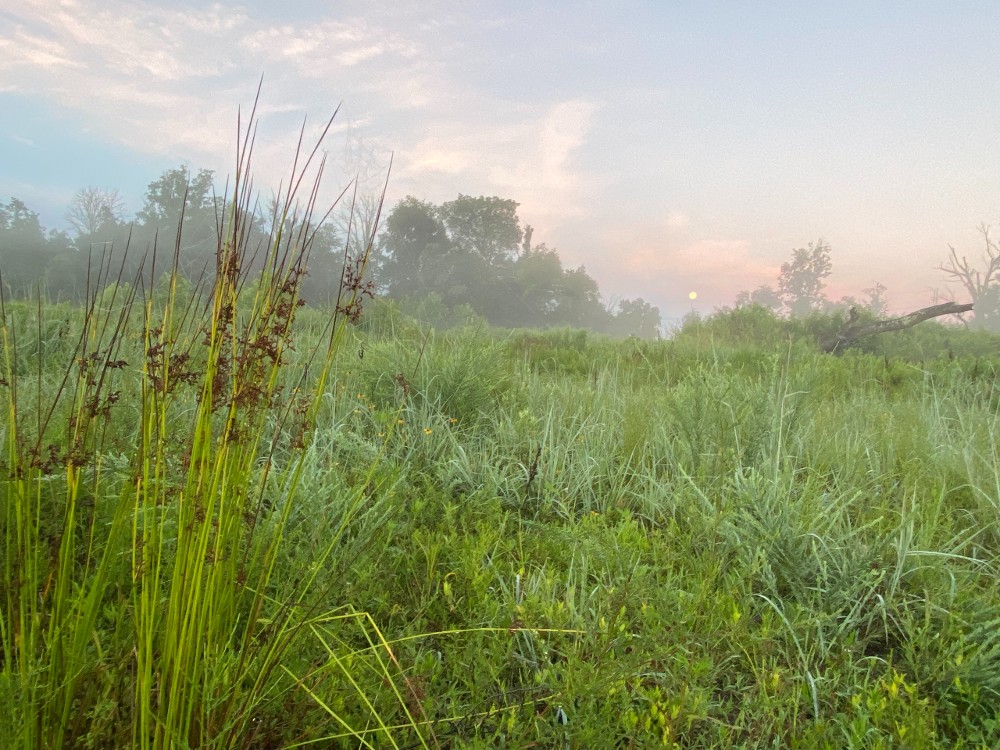More of Mud Creek
Added land provides space for public access and bog restoration
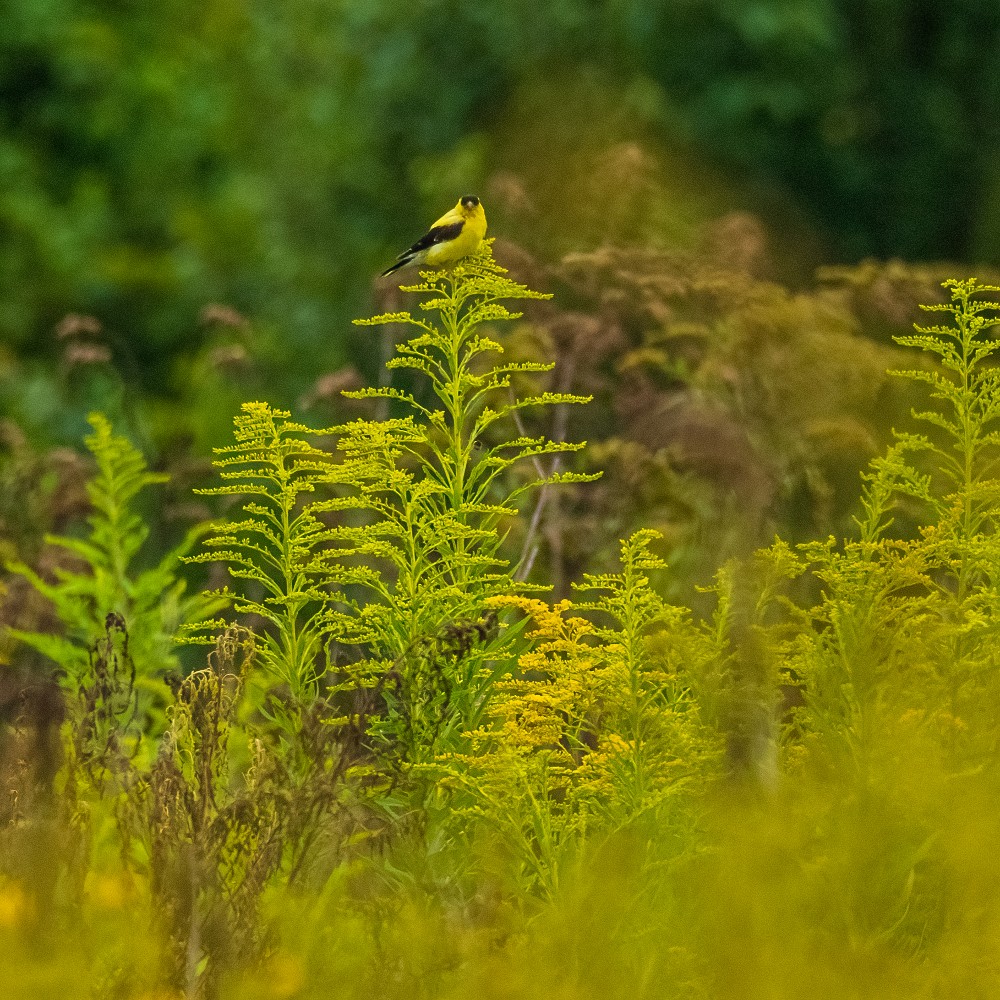
Three years ago, you might have stood in some abandoned farm fields near the confluence of Mud Creek and the French Broad River. The fields were mowed short so you could see across a wide floodplain without trees to block your view. It was just grass, sometimes covered in standing water after heavy rains.
Today, if you came back, you would see a place that seems to be made new. Crowds of swallows swoop over backwater sloughs that didn’t exist a few years ago. Songbirds perch in young trees and shrubs to greet the dawn. You might see colorful indigo buntings, redwing blackbirds, or yellow breasted chats. Ducks and herons fly overhead. Blooming meadows thrum with insect noise. Iridescent dragonflies buzz over new-made wetlands.
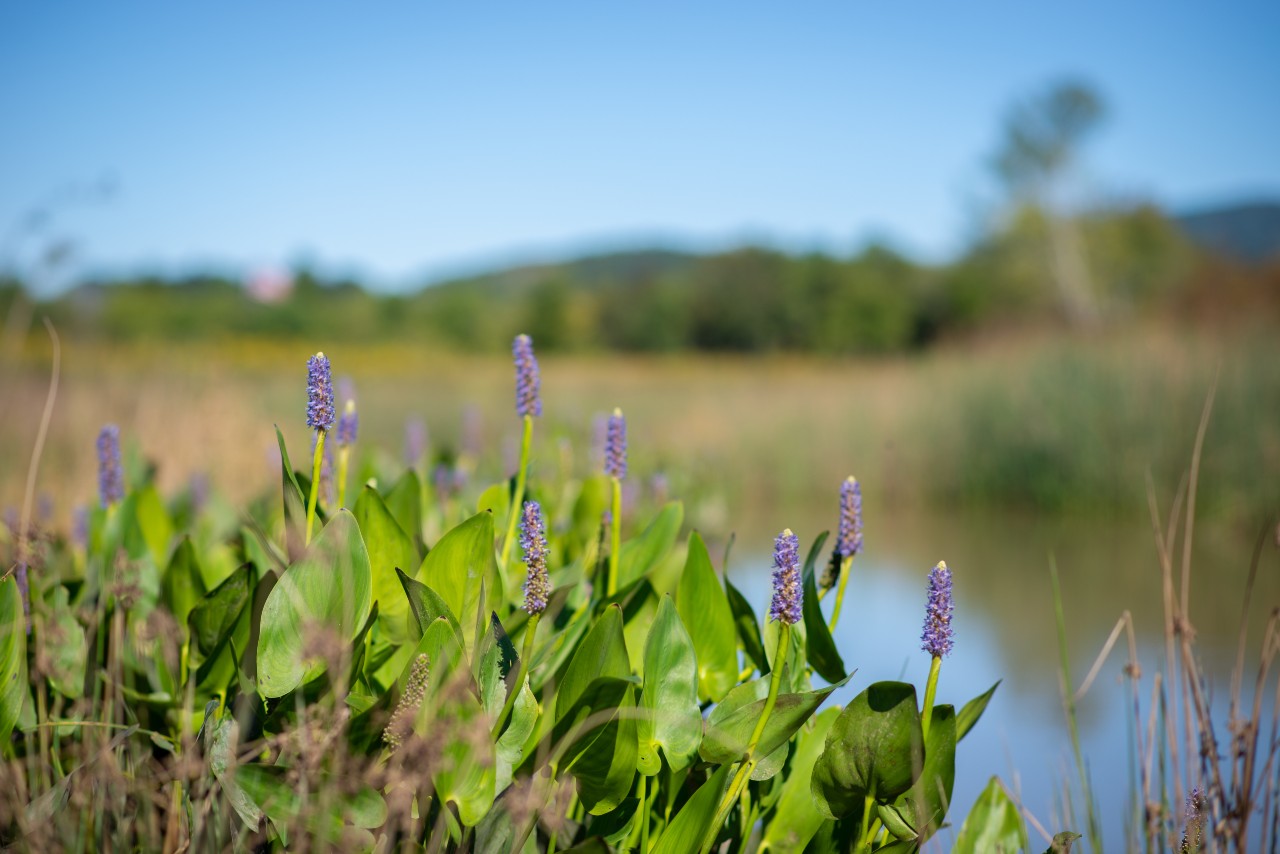
Mud Creek has already seen a transformation, and it’s going to keep getting better. That’s partly because Conserving Carolina recently purchased another 6.7 acres to add to the existing 103-acre restoration project. “It’s surprising how much value this small acreage adds,” says David Lee, Conserving Carolina’s Natural Resources Manager.
Currently, the only public access to the Mud Creek restoration is if you get there by paddling the river. This added land will connect the restoration to a public road—and even planned greenway routes. The new tract also has potential for a bog restoration that will be unique from the other wetlands at Mud Creek.
Link to Roads and Greenways
Lee has been managing the Mud Creek floodplain restoration since 2019—while bulldozers dug pools for sloughs and wetlands, while invasive plants were replaced with native vegetation, and now as the new meadow, wetland, and forest communities take root.
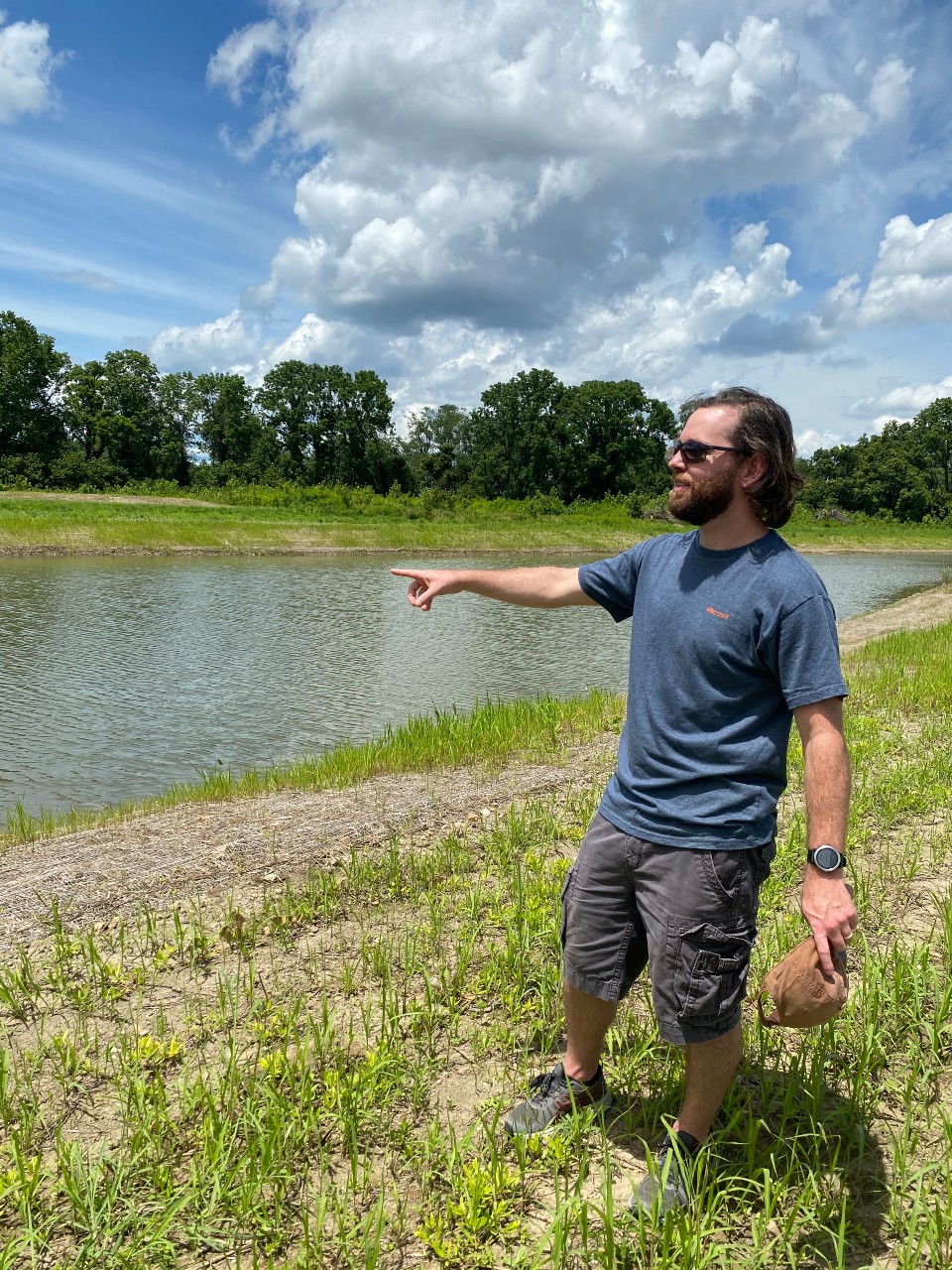
It’s always changing, he says.
“Before, you could see across the entire hundred-acre floodplain. And now when you go out there, you can’t see much past the entrance because we have a forest growing there. And it’s not just any forest. It’s a montane alluvial floodplain forest. That’s a rare natural community in North Carolina that we wanted to restore.
“Another thing that always stands out as I walk the tract is that you hear so much more. Mainly birds, but also you hear scurrying in the bushes. You catch a glimpse of mice running across the path. There’s scat. You see tracks, from beaver or herons or deer. There’s just a lot more signs of life out there now.”

Still, there are few opportunities for the public to witness the changes at Mud Creek. That’s because the original Mud Creek property has no connection to a public road—only an easement providing limited access. The new tract will provide a connection to the road as well as space for a small parking lot.
It could also offer public access via two greenways in Henderson County’s greenway master plan—the Oklawaha Greenway and the French Broad River Greenway, which would intersect in this area. Rebekah Robinson, who leads Conserving Carolina’s greenway projects, says that the highest priority section would connect Mud Creek to Westfeldt Park, near the airport.
“The greenway would be an important recreational opportunity in what’s becoming a pretty dense residential area,” Robinson says.
She points out that there’s already a large housing development bordering the Mud Creek restoration and another one planned across the road. “So, you have a lot of folks who live within walking distance of this future greenway segment.”
There could also be trails through the restoration site. Since the land is fairly level, it lends itself to more accessible trails, offering options for people with disabilities. Greenway connections would make it possible to get there without driving, so it would be easier for young people to explore the wetlands and woods.
Public access will also provide opportunities to share the story of Mud Creek, as the restoration continues to unfold, with benefits for water quality, wildlife, recreation, and climate change. “There’s a lot of educational opportunity,” Lee says. Signs along the paths could explore topics such as rivercane restoration, muskie sloughs, pollinators, and natural flood control.

A Different Kind of Wetland
In addition to public access, the new addition to Mud Creek contains a degraded wetland with potential for a unique bog restoration. This bog, or fen, would be different from the wetlands already restored at Mud Creek, which are largely filled by floodwater. On the new tract, the water source would be mainly from groundwater. Because the hydrology is different, the wetland would support a different natural community.
Anita Goetz, a retired U.S. Fish and Wildlife Service (USFWS) habitat restoration biologist who serves on Conserving Carolina’s board says, “Through ecological restoration, this area could serve as habitat for and may aid in the recovery of several critically endangered and rare plants.” The restored wetland could be home for many species of salamanders, as well as other amphibians, reptiles, birds, and mammals. “We don’t know what the seed bank holds within this tract,” she adds, “so it will be interesting to see what plants emerge post-restoration.”
The success of the Mud Creek restoration so far is due to the involvement of many partners including USFWS, NC Wildlife Resources Commission, NC Land and Water Fund, NC Department of Environment and Natural Resources, NC Environmental Enhancement Grant Program, NC Solutions Natural Resources Conservation Service, SM Soil and Water, and Jennings Environmental. The purchase of the new tract was made possible by Greg Jennings, who provided a conservation loan until Conserving Carolina could raise necessary funds.
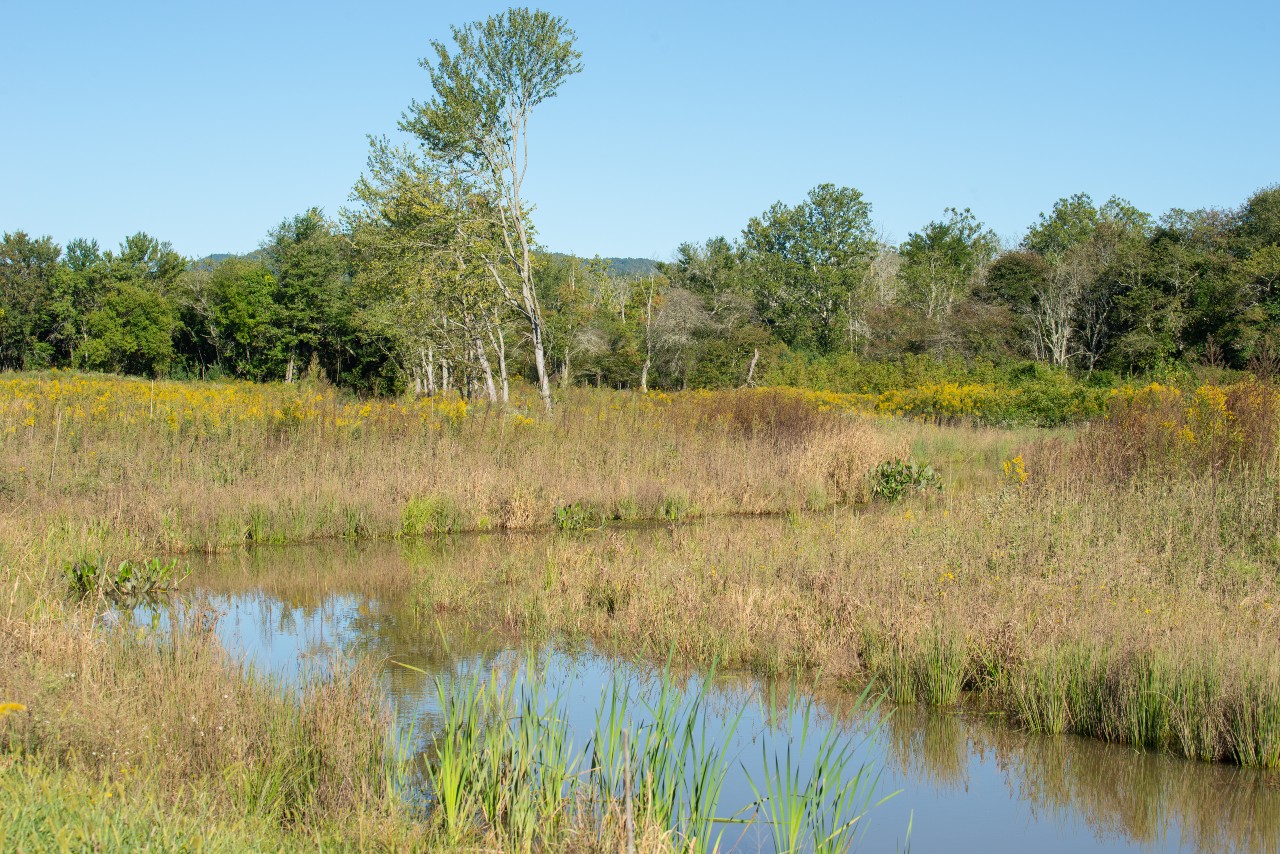
Watching It Grow
Vibrant natural floodplains like Mud Creek would once have lined the French Broad River. Today, they are rare. In fact, Mud Creek is one of the very few places along the upper French Broad River where you can see water mingling with the land, where it overflows to soak wetlands and nestle into backwater sloughs. What you usually see is a channelized river, expected to stay within straightened, bermed banks. All along the French Broad River valley, floodplains have been cleared and drained. They were converted into farms, housing, and other developments.
We need farms and housing—and we also need natural areas along our rivers.
Executive director Kieran Roe, says, “Conserving Carolina actively works to preserve farmland. We’ve protected a total of 37 farm properties, including two farms we were proud to conserve this year. And we’re pursuing new funding sources that will allow us to protect more local farmland. We also see places like Mud Creek where frequent flooding was making the land less viable for agriculture. In those cases, natural floodplain restoration seems like a very successful conservation outcome. Importantly, these restorations help prevent flood damage to farms downstream.”
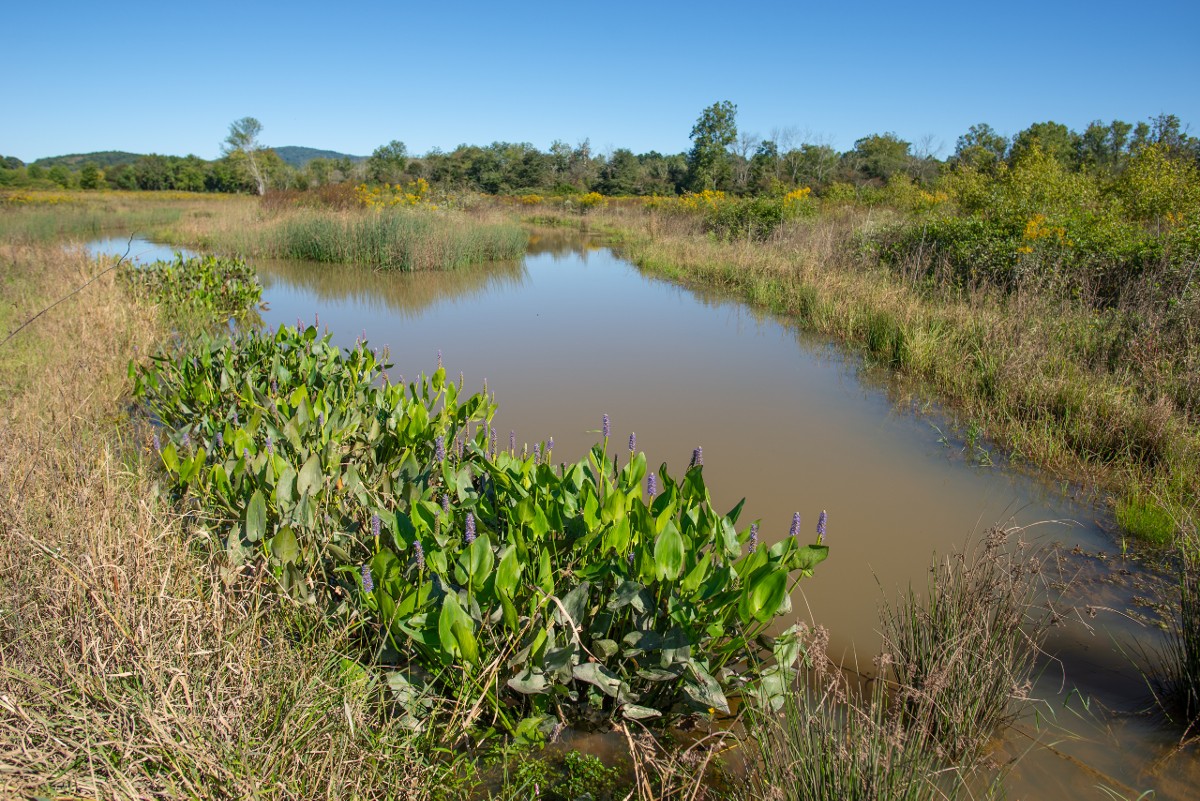
When a river is confined and can’t access its floodplain, more water rushes downstream during floods. This powerful, high water can wipe out crops, homes, buildings, roads, and other infrastructure. Meanwhile, climate change is resulting in more intense storms and flash flooding, for example, the devastating 2021 Pigeon River flood. By contrast, a natural floodplain soaks up water, reducing flood damage. At the same time, forests and other natural areas sequester carbon—an important solution to climate change.
Not only do natural floodplains reduce flooding, they also provide cleaner water. Trees and vegetation along riverbanks prevent the erosion you see too often from denuded, cliff-shaped, collapsing banks. Wetlands and natural areas also filter runoff so that water is cleaner when it reaches the river.
Today, the natural floodplain at Mud Creek is an anomaly—but that’s changing. The success of the Mud Creek restoration has spurred momentum to bring back a vibrant natural corridor along our region’s largest river. Now, two more floodplain restorations are in the works—at the new King’s Bridge Wildlife Conservation Area in Mills River and Conserving Carolina’s Pleasant Grove property in Etowah.
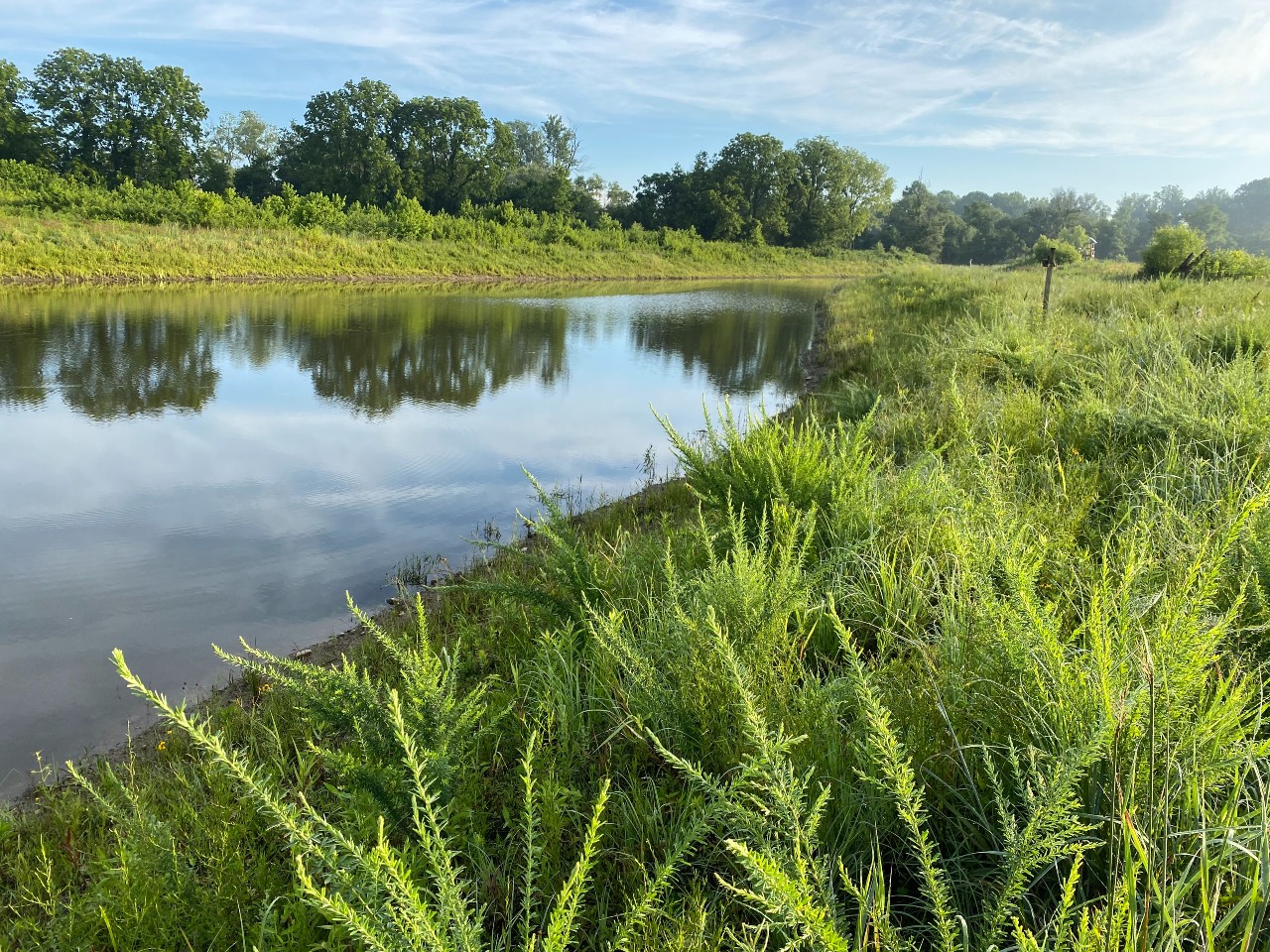
There could soon be more, according to a recent study by Conserving Carolina. Lee says, “Working with the community and private landowners, we’ve identified more places that could benefit from this kind of restoration and we’re working on finding the funding to do it.”
“The more restorations we can have along the river,” he says, “the healthier the corridor will be and the more resilient it will be to change.”
At Mud Creek, once there is public access, people can experience this transformation for themselves.
Lee says, “Every time I go out there, even it’s just been a month or two, it’s different. It’s going to keep on improving as each year goes on. Today, you can see young trees—and the community’s going to be able to watch those grow into a mature forest.”
